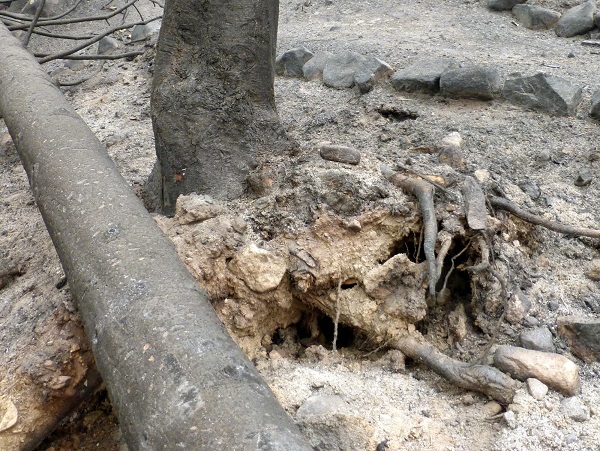
Wildfires can leave behind a lot more than ashes and singed trees. Burned trees that are still standing, as well as the remains of those consumed by flames, can pose dangers to workers, hikers, hunters, trail riders and others for weeks, months and even years after a wildfire.
Here’s what to watch out for:
Ash pits: Ash pits are created when trees and stumps and their root systems are completely burned away. Insulated by layers of ash and debris, embers remaining inside these pits can stay hot enough to inflict painful burns for weeks after the fire is out. It’s a hazard that wildland firefighters frequently encounter as these pits can look like solid ground, until you step in one. Falling or stepping into an ash pit can cause serious burns, so warn your family and neighbors to keep clear and make sure that children and pets are kept away, too. Even after the ashes cool, these pits can remain hidden hazards to hikers, livestock and vehicles.
Black trees: With so many thousands of acres of forestland in Washington state burned in recent fire seasons, there is an abundance of fire-killed trees on the landscape. The U.S. Forest Service’s Forest Health Protection program warns that conifer trees, especially firs, that die in a wildfire become especially susceptible to toppling over about three to five years after the fire. Keep clear of these snags, and be especially alert when the wind blows or the snow falls.
Green trees: Monitoring by the U.S. Forest Service reveals that surviving trees with green crowns but visible fire damage may start to fail (fall or drop large limbs) within three years after a fire. If the bark on the trunk has been burned off or scorched completely around the trunk’s circumference, the green tree is unlikely to survive. The failure rate of green trees with fire damage increases dramatically by the fourth year after a fire as additional damage from opportunistic wood-dwelling insects takes it toll.
If any of these hazards are present, approach cautiously and consider an alternate route.
If these hazards exist on your property, seek advice from a consulting forester or a certified arborist. Washington State University Extension’s wildfire website lists many resources for farm and woodland owners. The University of Idaho Extension publication “After the Burn” digs deep into post-wildfire land care, from damage assessment to salvage logging to replanting ground cover and new trees.